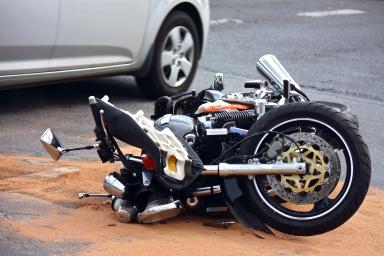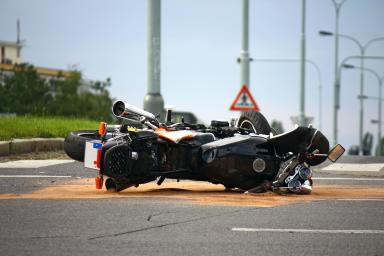Texas Motorcycle Laws

In 2021, Texas recorded the deaths of 519 motorcycle riders in road accidents, a 7% increase over the previous year. That’s 12% of all traffic accident fatalities, despite motorcycles accounting for less than 2% of vehicles in the state.
Understanding the laws governing motorcycle usage is essential for upholding safety and compliance on the roads of Texas. Like car drivers, motorcyclists must be registered, licensed, and insured. But some additional rules and regulations apply only to motorcycles. Adhering to these rules ensures riders and other road users are safer and free from the worry of facing fines or other legal problems.
This guide looks at the most important Texas motorcycle laws and how they impact motorcyclists across the state.
Motorcycle Noise Restriction Law
According to the Texas Transportation Code Sec. 547.604, all motor vehicles must be equipped with “a muffler in good working condition that continually operates to prevent excessive or unusual noise.” However, unlike many other states, Texas places no restrictions on decibels emitted.
Motorcycle Helmet & Eye Protection Law
Texas requires all motorcycle and moped drivers (and their passengers) to wear a helmet until they are over 21 and have completed a motorcycle operator course approved by the Texas Department of Public Safety. Those over 21 who have not completed a course can be exempt from wearing a helmet if they have medical insurance coverage for a minimum of $10,000.
Helmets must meet the Federal Motor Vehicle Safety Standard #218 (FMVSS-218), adherence to which is indicated by the DOT (Department of Transport) sticker. These federal standards apply to all motorcycles, motor scooters, and mopeds, regardless of the number of wheels or size. Helmets must display the DOT sticker on the back of the helmet. Law enforcement officers are prohibited from stopping motorcyclists for the sole purpose of determining whether they have completed the appropriate training and safety courses or are covered by insurance.
Although helmets are not a legal requirement for people over 21 in Texas, it is strongly advised to wear one. Research has shown helmets are about 37% effective in preventing motorcycle deaths and about 67% effective in preventing brain injuries.
Texas has no requirement for protective eyewear on public roads but it is strongly recommended to improve safety. Eye protection is required when taking motorcycles offroad.
Licenses
Operating a motorcycle or moped on public roads requires a ‘Class M License.’ Bikers must pass a Texas Department of Public Safety-approved training course before applying for their license. There are separate courses for two-wheelers and three-wheelers. Applicants between 18 and 24 who don’t hold a current driver’s license must take an Adult Driver’s Education course. Out-of-state applicants with a motorcycle license are not required to show proof of course completion.
Obtaining a license requires applicants to pass both a written test and a road test. Applicants must be 16 or older and in possession of an unrestricted Class A, B, or C license.
For the road test, applicants must have their own bike and bring a licensed driver to drive the examiner during the road test. Both bike and car must pass vehicle assessment before the test can commence.
Passengers
Texas is one of only five states with age restrictions on passengers that can ride on a motorcycle (the others being Louisiana, Arkansas, Hawaii, and Washington). Under Texas law, no one under the age of five can ride as a passenger. Passengers over five and under 21 years old must adhere to the helmet laws described above. Passengers over 21 can ride helmetless if the driver meets the requirements described above.
The motorcycle must have a permanent passenger seat if it is carrying a passenger.
Lane Splitting
Texas prohibits lane splitting for all vehicles - although it remains a contentious part of the law as far as motorcyclists are concerned. The wording in the legislation is deliberately ambiguous and is clearly aimed primarily at cars. Road safety advocates point to evidence suggesting that a safety-first approach can include lane splitting for motorcyclists. Research from California shows motorcyclists are significantly less likely to be rear-ended or suffer serious injuries or death if they practice responsible lane splitting.
Nevertheless, California remains the only state where lane splitting for motorcyclists is explicitly addressed in the law. Due to the state’s fault and liability laws, motorcyclists in Texas should proceed with extreme caution (see below).
Lane splitting can result in traffic fines for offenses including reckless driving, following another vehicle too closely, or unsafe lane changes. Reckless driving can incur a fine of up to $200 and/or up to 30 days in jail.
Headlights & Turn Signals
According to Texas law, motorcycles manufactured after 1975 must have their headlight on at all times. The rider must remember to turn it on for motorcycles that don't do this automatically.
Texas does not require motorcycles to have built-in turn signals. However, it is strongly recommended by safety advocates and the DMV that motorcyclists install turn signals if their bike does not already have them.
Without turn signals, riders must learn and use the proper hand signals whenever making a turn. For a left turn, the left arm must be straight and down to your side. The left arm must be out to the side and bent at the elbow for a right turn. These are the two most basic hand signals for the road.
Motorcycle Equipment Required by Law
In Texas, a motorcycle must have the following to be legal and drivable.
Vehicle Identification Number
License Plate Lamp
Headlamp
An Exhaust System
Wheel Assembly
Tail Lamp
Stop lamp
Horn
Mirror
Steering
Brakes
Tires
Rear Red Reflector
Mopeds must be equipped with the following:
Brake
Reflector
Head Lamp
Rear Lamp
Texas Motorcycle Insurance & Registration Requirements
Texas law requires all motorcycles and mopeds to have compulsory liability insurance up to the following minimum coverage limits:
$30,000 in bodily injury per person
$60,000 in total bodily injury per accident
$25,000 in property damage per accident
This basic coverage, often termed 30/60/25 coverage, only covers injuries to other people and damage to their property. Known as "bodily injury and property damage" (or "BI/PD”), it does not protect you or your bike. If you need more comprehensive coverage than BI/PD, such as theft or contents insurance, you will need to upgrade your policy.
All motorcycles, trikes, and mopeds must be registered through the County Tax Assessor-Collector in the owner’s county of residence. They must have a registration sticker and undergo annual inspections at an approved station. Approval certificates must be displayed on the rear license plate.
How Much Can Someone Sue for a Motorcycle Accident in Texas?
Every motorcycle accident is different. Settlements vary depending on the circumstances of the accident, and values are arrived at depending on a wide range of factors, including the gravity of injuries caused, recovery time, income, age, health, and insurance.
Courts will only award punitive damages if the at-fault party showed gross negligence, like driving under the influence of alcohol or drugs. Punitive (or exemplary) damages are defined as damages awarded to punish rather than as economic reimbursement for medical bills, loss of income, etc.
In Texas, punitive damages are capped at two times the amount of economic damages plus the amount equal to non-economic damages up to $750,000 or $200,000, whichever is greater. Punitive damages are only awarded in cases where other damages are awarded.
To maximize the potential value of any injuries and damages, you should seek immediate medical attention, obey the doctor’s orders, and consult a legal expert.
The Statute of Limitations in Texas
The statute of limitations for motorcycle accidents in Texas is two years, the same as for any other personal injury claim. That means that if you’ve been injured in a motorcycle crash, you have two years from the date of the accident to file an insurance claim or lawsuit. If you miss the deadline, you will not be able to make any type of claim, no matter how severe your injuries or how negligent the at-fault party was. The same statute of limitations applies to lawsuits specifically relating to vehicle damage.
The calculation changes slightly if the accident resulted in a death and you wish to pursue a wrongful death claim on behalf of a loved one. In wrongful death claims, the clock doesn’t start ticking on the statute of limitations until the date of death, not the date of the accident. Once the statute of limitations expires, the plaintiff loses their right to recovery.
Is Texas a no-fault state?
No. Texas is an at-fault state, meaning the at-fault driver is liable for damages. While liability insurance covers these damages, any excess amount can be recovered by filing a lawsuit against the at-fault party.
If more than one person is at fault for the accident, Texas applies the comparative negligence rule, which assigns a portion of fault to each at-fault party, which may include the injured person.
Expertise.com StaffAuthor
Step into the world of Expertise.com, your go-to hub for credible insights. We don't take accuracy lightly around here. Our squad of expert reviewers, each a maestro in their field, has given the green light to every single article you'll find. From rigorous fact-checking to meticulous evaluations of service providers, we've got it all covered. So feel free to dive in and explore. The information you'll uncover has been stamped with the seal of approval by our top-notch experts.


![¿Cuál es la indemnización promedio de las demandas por accidentes de moto? [2023]](https://images.ctfassets.net/k00sbju4hbzq/590XSDSoqNVs6XSMNY5s3G/a969ee3bedaaf9016cec601fc30f495b/average_motorcycle_accident_settlement.jpg?fit=fill&w=384&q=75)

